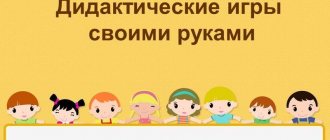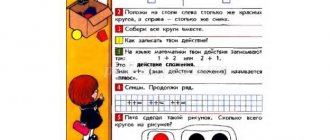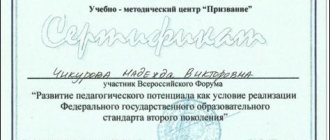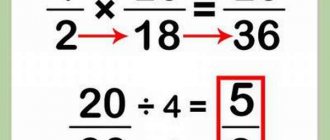Organizational moment of a non-traditional lesson
A non-traditional lesson differs from a regular lesson in a number of characteristic features.
Among the main ones:
- unusual venue;
- the presence of new elements within the general school curriculum;
- combination of collective and individual work;
- attracting people with a similar type of activity within the framework of the topic being studied;
- use of video and audio materials;
- creative work;
- collective analysis of activities after the lesson;
- creation of an initiative group consisting of volunteer students participating in preparation for the upcoming lesson;
- combining the topic being studied with events that are relevant to a specific age group.
The organizational aspect of a lesson in elementary school may vary depending on the focus of the subject itself.
For example:
| Item name | Interesting organizational options |
| Russian language | Considering the importance of the Russian language as a subject studied in primary school, non-traditional lessons on topics related to it must be conducted with maximum involvement of students in the educational process. You can psychologically prepare children for further work:
|
| Mathematics | The most engaging introductory part of a mathematics lesson in further work is a theatrical performance. Teachers, parents, or some of the children themselves who voluntarily decide to contribute to the organization of the activity can participate in an amateur performance. As the main character, you can take modern characters from famous cartoons or representatives of the “classics”, for example, Pinocchio or Dunno: “Hello, children! Of course you recognized me. I - …! I came to you for help. For almost a week now I have been struggling with several problems that just refuse to give in to me. Will you help me? And for this, after we cope with difficulties together, I will share with you my biggest secret! Well, do you agree? This is what we have to decide: ... (at this moment the teacher announces the topic of the lesson or reads aloud a specific problem that is planned to be solved during the lesson).” At the end of such an unconventional mathematics lesson, the main character, as promised, must share a secret with the students. You can compose any mystery, the main thing is that it is connected with the main plot of the work and does not characterize the hero used from a negative side. For example, Dunno can tell that he still has a friend on the Moon, and Pinocchio can describe the story of how he met the fox Alice and the cat Basilio and again taught them a lesson. As an alternative, you can invite children to save a famous cartoon character. It is possible to defeat the villain who stands in the way and holds the hero in captivity only by mastering the topic of the lesson proposed by the teacher. At the end of the lesson, if each student has really mastered the material, you can show a small theatrical sketch illustrating the process of liberation of the main character and his gratitude to the students. |
| Reading | To ensure that during a reading lesson, children are enthusiastically trying to master or hone a skill as quickly as possible, teachers are recommended to use the following as an introductory part of the lesson:
|
| The world | To interest younger schoolchildren in studying the world around them, teachers should focus their attention on the importance of understanding how nature works. As an effective technique for influencing children's consciousness, teachers are recommended to appeal to children's imagination. As an organizational point, an adult should invite students to think, “What would the world be like if ...” (for example, if everyone threw garbage into the appropriate trash bins or factories switched to environmentally friendly production, and so on). Such a formulation of the question will provoke children to a lively discussion and involvement in the educational process as a whole. Another option for a non-standard lesson could be an activity - a journey, during which children, under the guidance of a teacher, “fly” on an imaginary plane (the ideal would be the presence of decorations, handing out booklets to passengers of the aircraft, and so on) across different hemispheres of the Earth, or suddenly everyone turns into astronauts and will visit outer space, simultaneously studying how the planet on which humanity lives and the celestial bodies located millions of kilometers from the Earth works. For older children, it will be interesting to solve puzzles or crosswords that contain hidden words that are directly related to the topic of the lesson. For example, during an organizational moment, the teacher should tell the students a “secret” that before the bell rang, Autumn dropped into their office and left a task for the smartest children. Those who actively participate in solving the crossword puzzle, as directed by Autumn, will receive special prizes (the teacher prepares paper medals in advance, awarding titles to the most proactive students, for example, “Forest Mushroom Expert”). |
| Story | In elementary school, in the vast majority of cases, history, as a school subject, rarely arouses increased interest on the part of students. This is usually due to the need to memorize a large number of facts and accurate information, as well as the lack of opportunity to unleash their creativity within the framework of traditional lessons. A teacher’s non-standard approach to instilling in children attentiveness to the events of the past can become more effective if they explain to students the need to understand the history of not only their own people, but also people all over the world (knowing what the mistakes of the past led ancient people to, it is now necessary to do everything to avoid their repetition). Children's attention to history will also be attracted by organizational aspects drawn up in the style of:
|
Methods for creating a psychological mood in the classroom in primary school and kindergarten
The organizational aspect of a lesson in elementary school not only serves to test children’s readiness for classes, but also creates in them the necessary psychological state that contributes to better assimilation of educational material. Depending on the specifics of the children's group, the teacher should wisely choose the method of creating the desired mood in a lesson in an elementary school or preschool institution.
Most often, for this purpose, experienced teachers resort to using:
- relaxation game, the goal of which is to improve the psychological state of each student in order to further get rid of distractions while working in class (the teacher opens the window slightly to allow fresh air to fill the room; asks students to sit in a position that is comfortable for them, close their eyes, take several deep breaths. in the background during such a “meditation” it is recommended to include the sound of the sea, the cry of dolphins, the singing of birds or the rustling of leaves. The teacher should comment on the state in which, according to the plan, the students should be at the moment. After spending 5-7 minutes in a relaxed state, the teacher should gently bring the children back to their original state by inviting them to play a simple game, such as words).
An organizational moment during the lesson helps to defuse the situation and prepare children to learn the lesson. - Modern video materials (in this case, the use of videos or short cartoons related to the topic of the subsequent lesson is suitable. After watching a kind of presentation of further work, the children will understand what they have to do, and perhaps ask the teacher questions on the topic, which also contributes to general involvement in the learning process) .
- Logical approach (we are talking about a verbal explanation of the cause-and-effect relationships of the learning process in a specific subject. The teacher needs to convey to the children that without mastering the current topic, moving on to the next one will be impossible. This will encourage students to conclude that they can now listen to the teacher and sooner move on to a new stage or, over the next few days, independently study the current topic of the lesson, missing important points due to your inattention)
- “Active” methods (they are designed to encourage children to be active during the subsequent lesson. An “active” method can be either posing a question for children to discuss among themselves related to the topic of the lesson, or the well-known game “Brainstorming”).
Teachers are recommended to come up with new methods of creating a psychological mood each time, taking generally accepted methods as a basis. You should not use the same technique with different classes. This will not only be ineffective, but may also cause rejection by students who are aware of the teacher’s lack of interest in further teaching the lesson.






